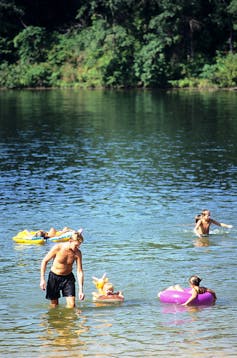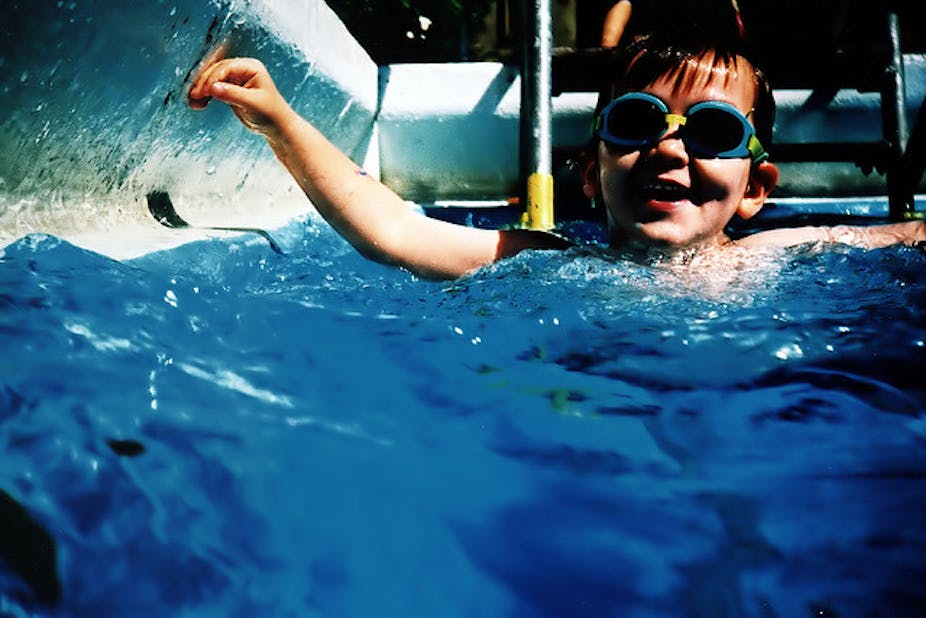The old saying that you should wait at least 30 minutes after eating before you swim is based on the idea that after a big meal, blood will be diverted away from your arms and legs, towards your stomach’s digestive tract. And if your limbs don’t get enough blood flow to function, you’re at risk of drowning.
But is it sound advice, or is it just parents wanting a 30-minute break to relax after a big lunch? For a fuelled-up child wanting to get back in the water, this can seem like eternity.
It’s true that digestion redirects some of the blood from the muscles to aid in the digestive process. With a reduced blood flow, there is potentially less oxygen available to the working muscle and stomach, which is a potential cause of cramping – though some researchers discount this theory.
Cramps are involuntary, spasmodic contractions of skeletal muscle during or after exercise, usually related to fatigue. But cramping during exercise is more likely due to a combination of factors, such as dehydration, electrolyte imbalance and neurological fatigue, which are unique to each person.
The truth is, we have enough blood to keep all our body parts functioning after a big meal.
Another suggested risk factor for swimming after eating is what’s commonly referred to as a stitch (or exercise-related transient abdominal pain or ETAP in sports literature): sharp pain felt just below the rib cage. Stitches aren’t well understood but are thought to be caused by cramping of the diaphragm due to restricted blood flow from pressure from the lungs above and abdomen below.
With any vigorous exercise after eating, there could be some discomfort such as heartburn or vomiting, caused by unexpected reflux or involuntary regurgitation. This is more likely to occur when there’s an increase in external pressure, such as while diving.

So what does the data say about the myth?
An examination of the Royal Lifesaving Association’s Australian reports on drowning over the past few years gives no mention of lives being lost after eating. And neither the American Academy of Pediatrics, the United States’ Consumer Product Safety Commission, nor the American Red Cross offer any guidelines or warning related to swimming after eating.
These organisations are far more concerned with the elevated risk of drowning due to drinking alcohol. Alcohol and drugs can severely impair judgement and physical ability, and increase the risk of spasm of the vocal cords if water enters the windpipe.
In the 2010-11 reporting period, 17% of all drownings in Australia were attributed to alcohol or drugs. Within the 18-to-34 age group, this figure was much higher – up to 45%. So it’s important to be aware of the risk of alcohol and drugs when in, on and around the water.
While swimming on a full stomach can be uncomfortable and, if excessive, can lead to vomiting, it’s unlikely to put you at greater risk of drowning. This will be great news for kids, but less so for their parents wanting to rest after lunch.
Common sense, however, suggests that swimming is not the best way to settle that full stomach. If you’re keen to get back to the water quickly, opt for foods high in simple carbohydrates. They’re not only good for you, they digest far more quickly than the fat and protein in a barbecued steak.

